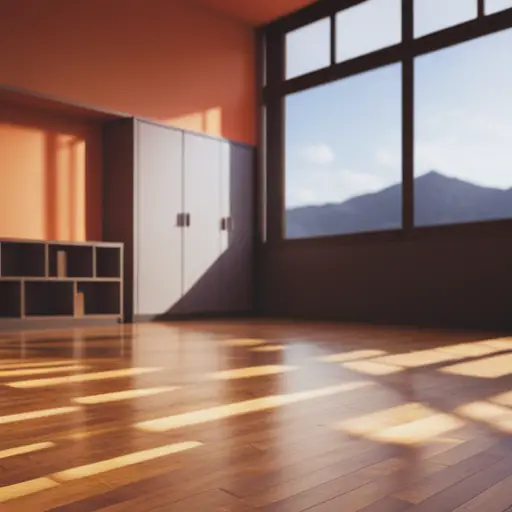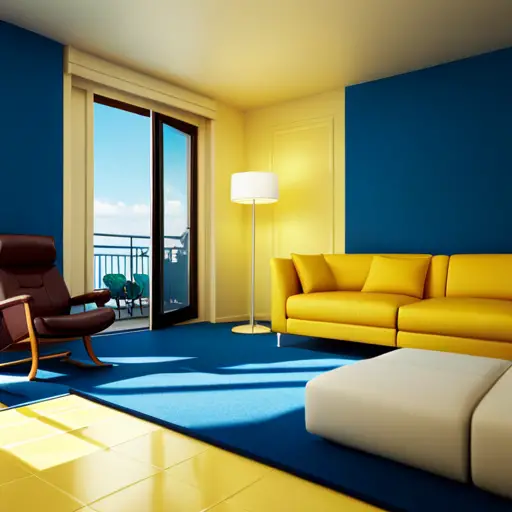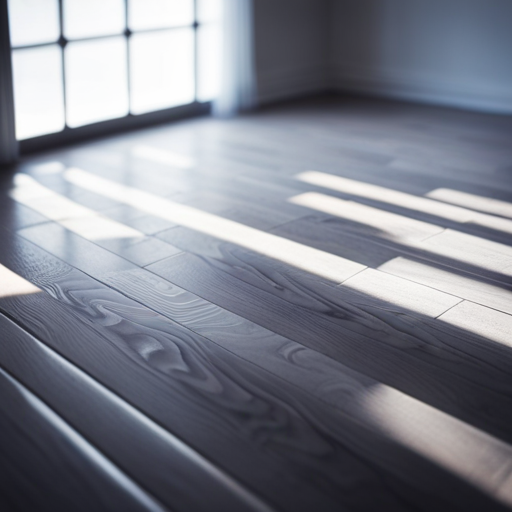Mixing and Matching Different Flooring Materials

Elevate your interior design by embracing the art of mixing and matching different flooring materials. Discover how to seamlessly blend hardwood, tile, and carpet to create dynamic spaces that exude sophistication and style.
Explore the benefits, considerations, and expert tips for achieving a cohesive and visually stunning look. From defining distinct areas to crafting stylish combinations, unlock the potential of diverse flooring to elevate the ambiance of your home.
Benefits of Mixing Flooring Materials
One significant benefit of mixing flooring materials is the ability to create distinct visual zones within a space, enhancing its overall aesthetic appeal. This approach offers design flexibility, allowing for the integration of different textures, colors, and patterns to delineate specific areas within a room. By combining materials such as hardwood, tiles, carpets, or vinyl, homeowners can achieve a customized look that adds visual interest and depth to their living spaces.
In addition to the design advantages, there are practical benefits to mixing flooring materials. Each type of flooring has its own strengths, and by strategically using them in different areas, durability enhancements can be achieved. For instance, high-traffic areas may benefit from the resilience of tiles or the durability of hardwood, while cozier spaces like bedrooms could be adorned with the warmth of carpeting. This tailored approach not only contributes to the overall aesthetic appeal of the space but also ensures that the flooring is well-suited to its specific function.
Therefore, the combination of different flooring materials offers not only visual interest but also practical advantages in enhancing the durability and functionality of the floor.
Considerations for Mixing Different Flooring Types
When considering the mixing of different flooring types, it is crucial to pay attention to the transitions between the materials and ensure a seamless flow throughout the space.
Additionally, harmonizing colors and textures between the different flooring materials can create a cohesive and visually appealing design.
These considerations play a significant role in achieving a balanced and unified look when mixing different flooring types in a space.
Flooring Transitions and Flow
A key consideration when mixing different flooring types is to ensure a seamless transition and cohesive flow throughout the space. This involves paying attention to the way diverse materials merge and the overall flow and continuity of the flooring combinations.
To achieve this, the following factors should be taken into account:
-
Flooring Transitions:
Utilize transition strips to seamlessly connect different flooring materials, ensuring a smooth and visually appealing shift between spaces. -
Design Consistency:
Maintain a consistent design theme or color palette to create a harmonious flow between various flooring types, enhancing the aesthetic appeal of the space.
Harmonizing Colors and Textures
Continuing from the previous subtopic on flooring transitions and flow, a crucial aspect to consider when mixing different flooring types is harmonizing colors and textures to create a cohesive and visually appealing space.
Creating visual interest through color coordination and textural contrast is essential for a seamless transition between different flooring materials. When harmonizing colors, consider the undertones and intensities of the flooring to ensure they complement each other.
Additionally, textures play a vital role in adding depth and dimension to the overall design. Combining smooth and rough textures or incorporating subtle patterns can create a visually engaging environment.
Tips for Creating a Cohesive Design
When considering the integration of different flooring materials, it’s crucial to focus on creating a cohesive design.
One way to achieve this is through the use of complementary color schemes, which can tie the various flooring types together and create a harmonious overall look.
Additionally, employing consistent transition methods between different flooring areas can help maintain a seamless flow and enhance the visual continuity of the space.
Complementary Color Schemes
Creating a cohesive design through complementary color schemes is essential when mixing and matching different flooring materials. Color psychology plays a crucial role in evoking emotions and setting the tone for a space. When selecting complementary colors for different flooring materials, it’s important to consider their visual impact on the overall design.
Here are some tips for creating a cohesive design with complementary color schemes:
-
Consider the Mood: Utilize color psychology to choose hues that align with the desired ambiance of each space. Warm and cool tones can create distinct atmospheres, so consider the function of each room when selecting colors.
-
Balance and Contrast: Use complementary colors to bring balance and visual interest to the design. Pairing light and dark flooring materials can create a striking contrast while maintaining a cohesive look.
Consistent Transition Methods
To ensure a seamless and harmonious visual flow between different flooring materials, it is imperative to employ consistent transition methods that maintain the overall design integrity. Seamless transitions not only enhance the visual impact of the space but also contribute to its functionality. Consistency in transition materials, such as using the same metal or wood finishes throughout the space, adds to the practicality of the design. Practicality, in this context, refers to the ease of maintenance and the smooth transition between different types of flooring. By utilizing similar transition methods across various flooring materials, a cohesive and unified design is achieved. The table below provides a comparison of different transition methods to aid in the selection of the most suitable approach for creating a cohesive design.
| Transition Method | Visual Impact | Practicality |
|---|---|---|
| T-molding | High | Moderate |
| Threshold | Moderate | High |
| Flush Reducer | Moderate | High |
| Overlapping Reducer | Low | High |
| End Cap | High | Moderate |
Inspiration for Mixing and Matching Flooring
One can find inspiration for mixing and matching flooring by exploring various design styles and experimenting with different textures and colors. When seeking creative combinations and unique pairings for mixed flooring, consider the following:
-
Natural Elegance
Embrace the juxtaposition of sleek marble tiles with warm hardwood to create a luxurious and inviting ambiance. The contrast between the cool, smooth marble and the rich, natural wood grain adds depth and sophistication to any space. -
Modern Industrial Fusion
Combine polished concrete with distressed wood for an urban, contemporary look. The marriage of industrial concrete and rustic wood creates a visually intriguing blend of textures, perfect for creating a trendy, metropolitan aesthetic.
Creating Defined Areas With Different Flooring
Differentiate various living spaces by using distinct flooring materials to demarcate boundaries and enhance visual appeal.
Creating visual interest through flooring is a strategic way to define different areas within a space. Designing with purpose allows for a seamless transition between rooms while maintaining a sense of individuality.
For instance, using hardwood flooring in the dining area and transitioning to a plush carpet in the living room not only delineates these spaces but also adds a tactile and visual contrast.
In open-plan layouts, utilizing patterned tiles in the kitchen can create a functional and stylish division from the adjoining hardwood-floored living space.
Additionally, incorporating a mix of materials such as laminate, vinyl, or concrete can further delineate specific zones, like a study area or a cozy reading nook.
By consciously choosing varied flooring materials, each section of the room becomes distinct, contributing to the overall aesthetic appeal and functionality of the space.
Thoughtful consideration of different flooring options truly allows for the creation of visually dynamic and purposeful living areas.
Stylish Combinations of Flooring Materials
Stylish combinations of flooring materials can elevate the overall aesthetic appeal of a space while clearly defining separate living areas. Creative pairings and unique combinations can add depth and character to a room, creating a visually striking environment. Here are some stylish combinations to consider:
-
Hardwood and Marble: The warmth of hardwood paired with the luxurious elegance of marble can create a sophisticated and upscale ambiance. This combination works beautifully in entryways or open living spaces, defining each area with a touch of opulence.
-
Concrete and Mosaic Tiles: Combining the industrial chic of concrete with the intricate patterns of mosaic tiles can result in a modern and artistic look. This combination is perfect for contemporary kitchens or bathrooms, adding a touch of creativity to the space.
Elevating Your Home Ambiance With Diverse Flooring
Enhancing your home ambiance with diverse flooring involves carefully selecting and integrating various materials to create a cohesive and visually engaging environment.
One way to elevate your home’s atmosphere is by incorporating different patterns and unique combinations of flooring materials. For instance, mixing hardwood with ceramic tile can add a touch of sophistication and visual interest to a space. The contrast between the warm, natural look of hardwood and the sleek, modern appearance of ceramic tile creates a dynamic and inviting ambiance.
Additionally, integrating materials like luxury vinyl plank with natural stone can bring a sense of depth and texture to a room, enhancing its overall aesthetic appeal.
Furthermore, combining flooring materials in creative ways allows for the delineation of different zones within an open floor plan, providing both functionality and style. Using distinct flooring materials to define specific areas such as the living room, dining area, and kitchen can add a visual hierarchy to the space, contributing to a more polished and intentional interior design scheme.
Frequently Asked Questions
What Are the Best Flooring Materials to Pair With Heated Flooring Systems?
When considering the best flooring materials to pair with heated flooring systems, it’s essential to prioritize durability, aesthetics, and compatibility with the heating system. Regular maintenance is crucial to ensure optimal performance and longevity of the heating system.
How Can I Incorporate Eco-Friendly Flooring Options Into a Mixed Flooring Design?
Incorporating eco-friendly flooring options into a mixed flooring design involves selecting sustainable materials like bamboo, cork, or reclaimed wood. Consider installation tips for seamless integration and maintenance considerations for long-term eco-conscious design.
Are There Any Special Considerations for Mixing Flooring Materials in High-Traffic Areas Like Entryways and Hallways?
When mixing flooring materials in high-traffic areas like entryways and hallways, it’s crucial to consider maintenance, durability, and aesthetic appeal. Ensuring a cohesive design while prioritizing durability to withstand heavy foot traffic is essential.
Can I Mix and Match Flooring Materials in a Small Space Without It Feeling Overwhelming or Chaotic?
Achieving a cohesive visual flow in a small space through color coordination and texture contrast is essential. Balancing flooring materials ensures the space feels harmonious and avoids overwhelming or chaotic sensations. Consider material balance for a well-integrated design.
Are There Any Unique Installation Techniques or Challenges When Combining Different Types of Flooring Materials?
When combining different flooring materials, unique installation techniques are essential to achieving design balance. Challenges such as transitions, height variations, and substrate compatibility require careful consideration. Symbolically, the seamless blend symbolizes harmony and innovation in interior design.
Conclusion
In conclusion, mixing and matching different flooring materials can bring depth, dimension, and dynamism to any space.
By carefully considering the benefits, considerations, and tips for creating a cohesive design, you can elevate your home ambiance with diverse flooring.
With stylish combinations and the ability to create defined areas, the options are endless for creating a unique and visually stunning space.

Rubin Everest, a seasoned expert in the world of flooring, brings a wealth of knowledge and passion to the surface. As the mind behind ebbow.com, Rubin is dedicated to sharing insights on the latest trends, innovative solutions, and expert advice in the realm of flooring. Whether you’re seeking practical tips for installation or design inspiration, Rubin Everest is your go-to source for all things flooring-related, making your journey to the perfect floor an informed and enjoyable experience.





